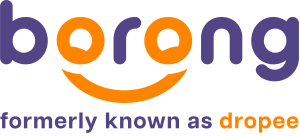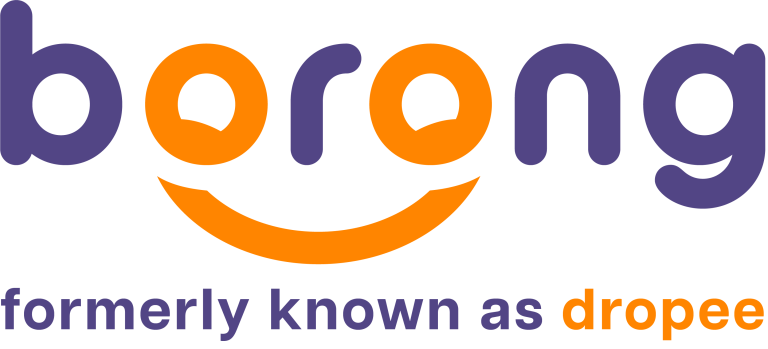Every successful business begins with a strong foundation – and at the heart of that foundation lies a well-defined business model. Whether you’re launching a startup or running a growing enterprise, having a clear business model is essential for strategic direction, resource management, and achieving long-term goals.
In Malaysia’s dynamic and competitive marketplace, selecting the right business model can make or break a company. With a wide range of opportunities emerging across industries, entrepreneurs must adopt a relevant and sustainable strategy to stand out and scale effectively.
What Is a Business Model?
A business model is a structured framework that outlines how a company creates, delivers, and captures value. It answers key questions like: Who are our customers? What do we offer them? How do we earn revenue?
At its core, a solid business model serves as a roadmap for decision-making, risk management, and market adaptation.
Also read: Wholesale Meaning: How to Optimise Stock, Sales, and Distribution
Key Components of a Business Model
Here’s what every entrepreneur should understand when analysing a business model example:
- Value Proposition: What problems are you solving or benefits are you offering to customers?
- Customer Segments: Who is your target market?
- Distribution Channels: How do you deliver products or services to your customers?
- Revenue Streams: What are the sources of income?
- Key Resources: What assets are necessary to operate effectively?
- Key Activities: What core operations are required to deliver your offering?
- Key Partnerships: Who are your external collaborators or suppliers?
- Cost Structure: What are the main expenses involved?
A clear understanding of these components is crucial when reviewing any business model example, especially for business owners in Malaysia seeking to grow sustainably.
Common Business Model Examples Relevant in Malaysia

Let’s explore several types of business models that are popular among Malaysian entrepreneurs:
1. Product-Based vs Service-Based Models
Companies may sell physical products (e.g. food, clothing, electronics) or intangible services (e.g. consultancy, beauty treatments, delivery). Each has distinct pricing, marketing, and customer relationship strategies.
2. Subscription Model
Customers pay a recurring fee (monthly or annually) for continued access to a service or product. Think streaming services, software subscriptions, or digital magazines.
3. Marketplace Model
Firms act as intermediaries between buyers and sellers. Platforms like Lazada and Shopee earn revenue through commission fees or advertising, making them standout business model examples.
4. Freemium Model
Offer basic services for free while charging for premium features. This model works well for tech platforms such as Canva or Spotify.
5. Franchise Model
Allows others to operate under your brand using your established system. Common in F&B chains like KFC or Secret Recipe, this model is ideal for rapid expansion.
6. Dropshipping Model
Entrepreneurs sell products online without holding inventory. When a sale is made, a third-party supplier ships the product directly to the customer. This is a favourite model among e-commerce beginners in Malaysia.
7. Direct-to-Consumer (DTC) Model
Manufacturers bypass traditional distributors and sell directly to customers. This model increases profit margins and offers greater control over the customer experience.
Real Business Model Examples from Malaysia
To further illustrate how these models work in practice, here are a few notable Malaysian companies that have implemented successful business models:
- Grab Malaysia: Initially a ride-hailing app, Grab expanded into food delivery, payments, and more. Its business model example showcases diversification and customer-centric innovation.
- FashionValet: This local fashion e-commerce platform uses a direct-to-consumer model to promote Malaysian brands while catering to niche audiences.
- Lazada Malaysia: As one of the largest marketplaces in the country, Lazada demonstrates how a well-optimised platform can connect thousands of vendors to millions of buyers.
These examples reflect how a thoughtful and adaptive approach to business models can fuel long-term success.
Also read: Customer Review: The Secret to Gaining Trust
What Makes a Business Model Succeed?
Choosing a business model isn’t just about following trends. It requires execution and adaptability. Here are several factors that determine a business model’s success:
- Innovation and Competitive Advantage: Offer something distinctive and hard to replicate.
- Technological Integration: Use tech tools to boost operational efficiency and enhance customer satisfaction.
- Deep Market Insight: Tailor your product or service to meet local consumer needs and preferences.
- Marketing and Expansion Strategy: Utilise digital marketing, influencers, and collaborations to reach new customer segments.
How to Choose the Right Business Model

Here is a step-by-step guide to selecting the most suitable model for your business in Malaysia:
- Understand Your Industry and Market
Identify your target customers and examine how they typically purchase or interact with similar products or services. - Compare Strengths and Weaknesses
Every business model example has its risks and rewards. Compare potential models objectively to determine the best fit. - Conduct Feasibility Studies
Before scaling, test your business idea through market research or a Minimum Viable Product (MVP).
A structured approach like this reduces the chances of failure and improves your likelihood of long-term success.
Also read: GMV Meaning: Definition, Calculation, and Business Insights
Business Model Trends in Malaysia (2025 and Beyond)
Business models in Malaysia are evolving rapidly due to digital transformation, rising consumer expectations, and global shifts in economic priorities. Below are five key trends shaping the future of Malaysian entrepreneurship:
1. Digitalisation and E-Commerce Growth
Malaysia’s e-commerce sector is projected to reach USD 10.72 billion by 2025. High internet penetration, urbanisation, and increased consumer spending are driving this surge. Government initiatives such as the Digital Free Trade Zone and National E-commerce Strategic Roadmap are also supporting cross-border trade and encouraging digital adoption among local SMEs.
2. Artificial Intelligence and Big Data
More companies in Malaysia are incorporating AI and data analytics to improve customer experience, streamline operations, and personalise product offerings. Shopee and Lazada, for example, use AI algorithms to deliver tailored product suggestions, boosting conversions by up to 30%. In future, AI-powered chatbots may handle up to 95% of customer interactions, helping businesses cut operational costs significantly.
3. ESG and Sustainability
Environmental, Social, and Governance (ESG) considerations are becoming central to business strategy. Malaysian consumers are increasingly eco-conscious, prompting companies to adopt sustainable practices. The National Sustainability Reporting Framework (NSRF) aligns corporate reporting with global standards, while amendments to the PDPA enhance consumer data protection.
4. Strategic Technology Investment
Malaysia is positioning itself as a regional hub for advanced manufacturing and digital technology. With over USD 100 billion planned investments in the semiconductor sector, and backing from companies like Intel and Infineon, the country is strengthening its industrial base. Big tech players such as Google, ByteDance, and Microsoft are also investing in AI infrastructure and data centres.
5. Digital Learning and Upskilling
Since the pandemic, demand for online learning and corporate training in Malaysia has soared. Entrepreneurs now have the opportunity to develop and deliver digital education solutions that address skill gaps and support the nation’s transition to a knowledge-based economy.
By aligning your strategy with these trends and using the right business model example, you can ensure your business remains relevant and competitive.
Build Your Business on the Right Foundation
A business model is not just a theoretical framework – it’s the core of your operational success. For Malaysian entrepreneurs, choosing the right business model example is key to navigating market demands, embracing digital trends, and standing out in a crowded space.
If you’re serious about building a future-ready business, start with the right model and equip yourself with the tools that make managing operations easier.
Borong is a B2B platform built to support business owners like you. From inventory management to seamless order processing, Borong helps you run your business efficiently and scale confidently.
Ready to grow your business in Malaysia? Join thousands of local entrepreneurs who have already transformed their operations with Borong. Contact us to discuss how Borong can assist your business.


